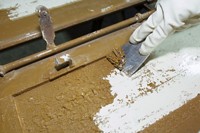Advertisement
Grab your lab coat. Let's get started
Welcome!
Welcome!
Create an account below to get 6 C&EN articles per month, receive newsletters and more - all free.
It seems this is your first time logging in online. Please enter the following information to continue.
As an ACS member you automatically get access to this site. All we need is few more details to create your reading experience.
Not you? Sign in with a different account.
Not you? Sign in with a different account.
ERROR 1
ERROR 1
ERROR 2
ERROR 2
ERROR 2
ERROR 2
ERROR 2
Password and Confirm password must match.
If you have an ACS member number, please enter it here so we can link this account to your membership. (optional)
ERROR 2
ACS values your privacy. By submitting your information, you are gaining access to C&EN and subscribing to our weekly newsletter. We use the information you provide to make your reading experience better, and we will never sell your data to third party members.
Endocrine Disruptors
EPA puts out draft review of 2 phthalates
The plasticizers are safe for some uses, with caveats
by Leigh Krietsch Boerner
May 23, 2024
| A version of this story appeared in
Volume 102, Issue 16

The US Environmental Protection Agency has finished a draft of risk evaluations for two phthalates—diisodecyl phthalate (DIDP) and diisononyl phthalate (DINP)—and found that one of them is safe for most uses.

The EPA concluded that with one industrial exception, no uses of DIDP pose an unreasonable risk to people’s health. The agency also found that while both compounds can cause liver damage, DINP is more potent. High concentrations of DINP can also cause cancer, but there was no such risk with DIDP. However, these results are preliminary and the EPA welcomes peer review.
In addition, the agency made physical, chemical, fate, and hazard assessments for DINP. In 2017, the US Consumer Product Safety Commission banned its use in toys, teething rings, pacifiers, and other items for children.
In 2023, the EPA added DINP to the list of toxic chemicals that need to be reported under the Emergency Planning and Community Right-to-Know Act and the Pollution Prevention Act. DINP “can reasonably be anticipated” to cause reproductive harm and developmental, kidney, and liver damage, according to the EPA’s justification for the addition.
DIDP and DINP are plasticizers, added to polyvinyl chloride (PVC) products to make them more soft and pliable. As a class, phthalates are known to harm reproductive development and interfere with male sex hormones.
The EPA evaluated their use under the Toxic Substances Control Act (TSCA), which considers the use of chemicals only in consumer, commercial, and industrial applications. “There are other uses of DIDP and DINP that are generally excluded from TSCA, such as personal care products, cosmetics, and food contact materials, and EPA did not evaluate risk associated with these uses,” the agency says.
Manufacturers of products that use DIDP and DINP requested that the EPA perform the risk evaluations in 2019. These evaluations are the first such ones the agency has conducted in response to a manufacturer request.
“We have full confidence in the safety of DIDP and DINP, and this is why manufacturers through ACC’s High Phthalates Panel requested risk evaluations in 2019,” the American Chemistry Council (ACC), which represents the chemical industry, says in a statement.
The EPA report is available for peer review and comment for the next 60 days. The agency will hold online meetings to discuss the findings from July 30 to Aug. 2.





Join the conversation
Contact the reporter
Submit a Letter to the Editor for publication
Engage with us on Twitter